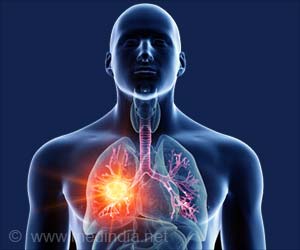Researchers at the University of Cincinnati have found that there is a greater chance for the prevalence of lung damage in the
Researchers at the University of Cincinnati have found that there is a greater chance for the prevalence of lung damage in the mine workers,some 25 years later in their lives, due to the exposure to legal levels of vermiculite.
Experiments conducted on mineworkers in Libby, Montana showed scarring and thickening of the membrane that lines the chest wall, some 25 years later.Vermiculite is a mineral that has a number of consumer applications, from gardening products to loose-fill home insulation.
The “Libby vermiculite” was first suspected of causing lung damage in the late 1970s, when researchers documented a cluster of bloody pleural effusions among workers who handled it.
In 1980, the researchers studied 513 individuals who worked at a plant that processed Libby vermiculite and 2.2 percent among them showed pleural changes or interstitial fibrosis.
The follow up of the study showed that the prevalence of lung damage in still-living members was 28.7 percent for pleural changes and 2.9 percent for interstitial fibrosis.
“I expected to see a higher rate of x-ray changes, but was surprised at the percentage,” said James Lockey, the principal investigator of the study.
Advertisement
Out of 430 surviving members, 280 were asked about their lung health and work history, including particular exposure level and the numbers of years they worked.
Advertisement
The analysis showed a significant trend of increasing changes with increased exposure. Workers with highest exposure levels had an average of 6 to 16 times the risk of pleural changes when compared to those who were minimally exposed.
Moreover, the changes were significant even at levels of exposure currently permitted by law.
“When humans are exposed to any mineral fibres that are long, thin and durable in human tissue and can reach the pleural membrane, these fibers can cause health problems,” Lockey said.
The findings are published in the second issue for March of the American Thoracic Society’s American Journal of Respiratory and Critical Care Medicine.
Source-ANI
SUN/M







